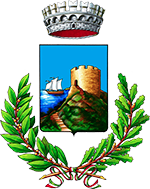
Santa Teresa Gallura
Historical overview
Santa Teresa di Gallura’s territory is perched above a rocky plateau with a view of the Strait of Longone. It serves as a major port for tourists travelling to and from Corsica nowadays. Sardinia’s northernmost point is the town. The coastline is marked by massive granite boulders in addition to white beaches, the most well-known of which is Rena Bianca Beach.
The area, which was inhabited in the Bronze Age, is home to a Spanish watchtower and the significant Nuragic settlement known as “Lu Brandali.” At the invitation of King Vittorio Emanuele I, Santa Teresa di Gallura was established in the 19th century, adopting the name of his wife, Maria Teresa of Austria-Este.
Several recently constructed churches can be found in the city centre, such as the parish church of San Vittorio Martire, which was constructed approximately in 1838 and contains priceless artistic elements donated by Maria Teresa of Austria, albeit it has recently undergone extensive remodelling as part of restoration work.
Even now, the town of Santa Teresa is known for the splendour of its coastline and is primarily a tourist destination, with summertime visitor numbers doubling.
Political exile in Sardinia and the insanity of Cilocco and Sanna Corda
The intense attempt to revive the Angioyan conflict on Sardinian territory, which transpired in and around Santa Teresa between June 13 and June 21, 1802, fell short of expectations due to a changing historical context, where French intervention was now merely an unlikely possibility. The Sardinian political exiles in Corsica pushed Ginguené, the diplomat, to call the Directory’s attention to the solution of the “Sardinian question” in the early months of 1798.
As the Savoy court approved the island’s cession in return for some territory in the Po Valley, hopes appeared to be solid.
Hopes were rekindled when the fervent Jacobin Coffin was named secretary for Sardinian affairs, and the exiles of Sardinia got ready to build a contingent in Bonifacio in honour of the momentous occasion. The project was delayed by perhaps too fortunate circumstances, as France was more interested in annexing territory on the peninsula. The matter arose again in mid-1799, when Angioy, the acknowledged head of the Sardinian exiles in Paris, delivered his magnificent Manifesto to the Directory. However, internal issues in Corsica thwarted this endeavour as well, and what was meant to be an expeditionary army was used to put down the Fiumorbo uprising.
The attempt by Sanna Corda and Cilocco was clearly destined to fail because of the altered international circumstances, despite being vehemently opposed by an Angioy who was by that point disillusioned about the island’s future. The Gallurese shepherds who accompanied them lacked the military prowess and ideological zeal of political troops, despite their bravery. Some of them were treasonous, and they were readily scattered. In what light, therefore, ought we to interpret Cilocco and Sanna Corda‘s foolishness? Most likely as an incident that embodies all the good and bad traits of Sardinians motivated by an unquenchable, irrational, and delusional desire for their homeland’s salvation.
Le capitaine Magnon: The city’s founder
Pietro Francesco Maria Magnon (1765–1813), a Savoy officer by origin, came in Sardinia in 1799 after he declined to enlist in the French army. In the 18th and 19th centuries, he was a highly relevant subject for Sardinian historical studies, having served as both Commander of the Tower of Longonsardo and Lieutenant of the Foreign Hunters.
The desire to quickly restore social and political authority in this land strip facing north, coupled with the fear of the Jacobins, provided the impetus to plan and construct a centre of new population. The idea was that even those living on the periphery of “civil society,” such as shepherds, smugglers, and bandits, could integrate into the ranks of the “new population” and be converted “into loyal subjects.”
In order to build the heart of Lungoni from the ground up, Magnon was specifically in charge of overseeing the areas acquired, the distribution of land plots, the planning processes, and the monitoring of the construction. Magnon attests to his efforts by presenting a thorough communication between the Viceroy and the leaders of the island. Prominently loyal to the throne, the soldier Magnon shown his mettle by pursuing and apprehending Cilocco when the latter made an attempt alongside Francesco Sanna Corda in June 1802.
Carlo Pillai, a historian, reports that, on that occasion, ‘he was in command of the contingent of the Foreign Hunters Corps and certainly played a leading role, so much so that he also issued certificates to people who had taken part in the expedition’, such as to a certain Pietro Cabras Misorro, awarded in September 1802. In 1814, Magnon died in an ambush: his human story remained entangled in the undergrowth of vendettas, bitterness, and hostility of the agro-pastoral society of that remote strip of Sardinia.
Bibliography
– Antona, il complesso nuragico di Lu Brandali e i monumenti archeologici di Santa Teresa Gallura, Sassari, Delfino editore, 2005.
– Mori, Sardegna, Torino, Unione tipografico-editrice Torinese, 1966, p. 488
– Pillai, Il “fondatore”: Pier Francesco Maria Magnon in M. Brigaglia, L. Carta (a cura di), La rivoluzione sulle Bocche. Francesco Cilocco e Francesco Sanna Corda “giacobini” in Gallura (1802), Cagliari, Edizioni della Torre, 2003, pp. 209-223
Texts
L. Melas, A. Nasone, S. A. Tedde

